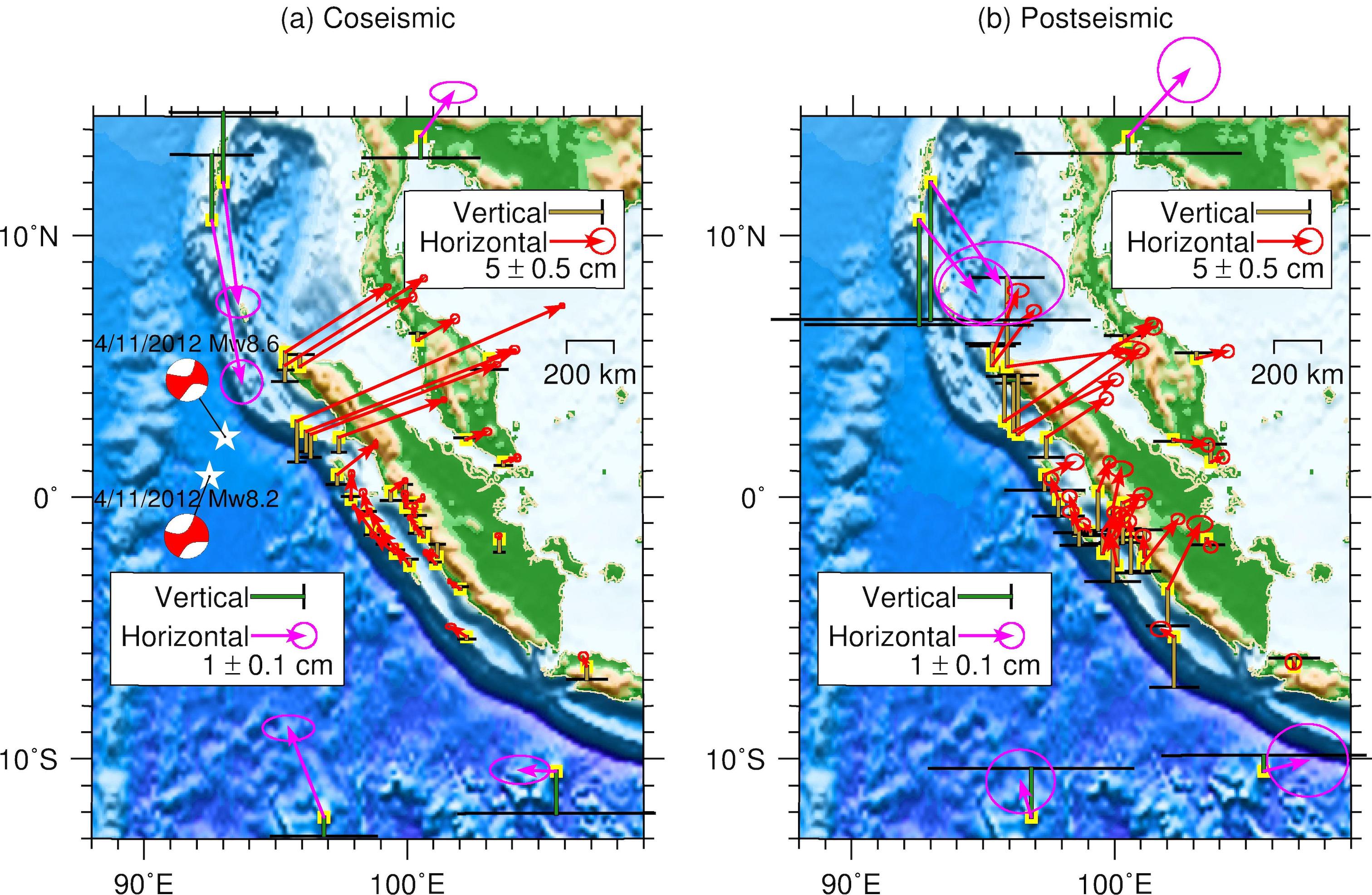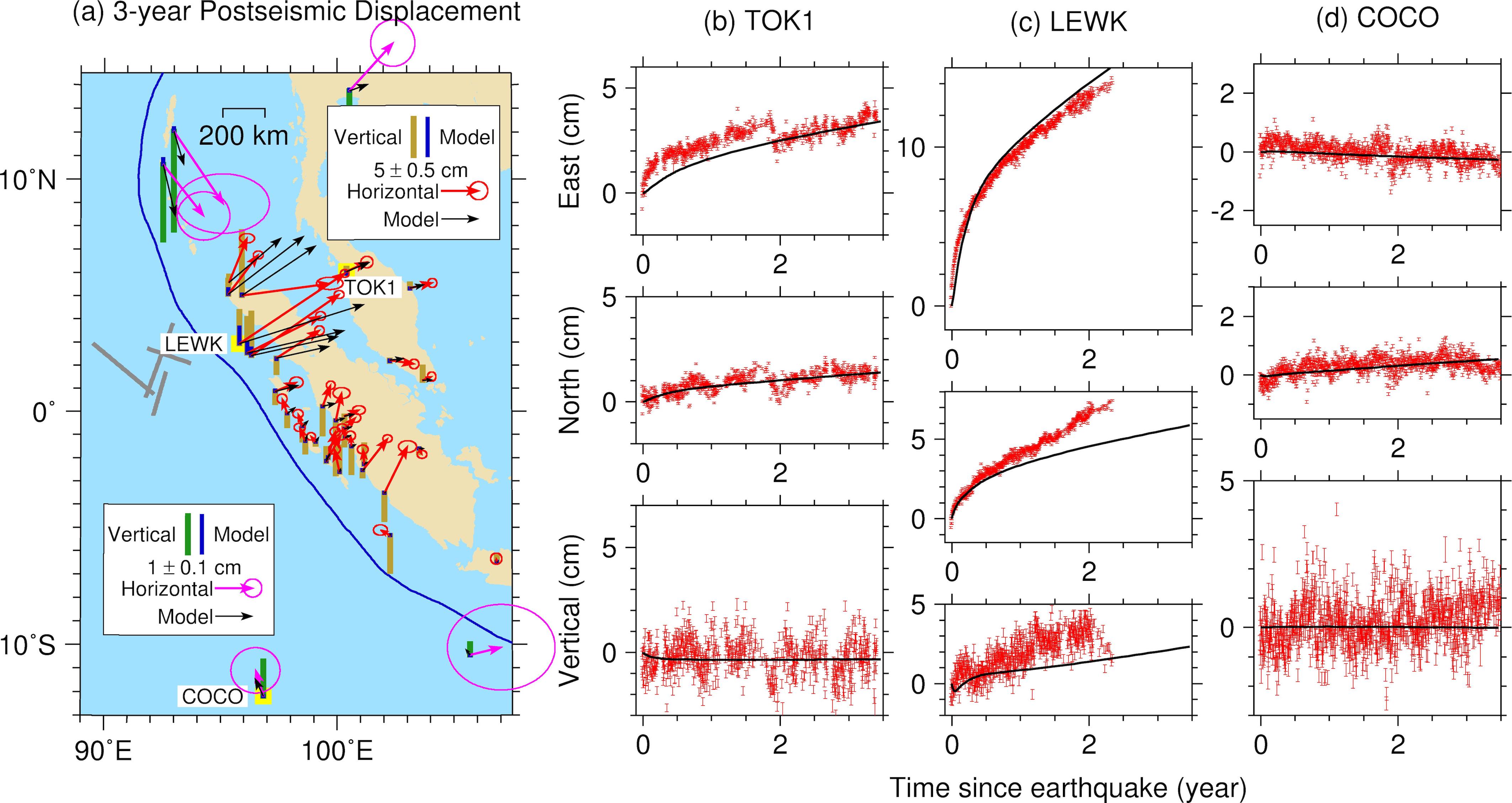

The concept of a weak asthenospheric layer underlying Earth’s mobile tectonic plates is fundamental to our understanding of mantle convection and plate tectonics. However, little is known about the mechanical properties of the asthenosphere (the part of the upper mantle below the lithosphere) underlying the oceanic crust, which covers about 60 per cent of Earth’s surface. Great earthquakes cause large coseismic crustal deformation in areas hundreds of kilometres away from and below the rupture area. Subsequent relaxation of the earthquake-induced stresses in the viscoelastic upper mantle leads to prolonged postseismic crustal deformation that may last several decades and can be recorded with geodetic methods. The observed postseismic deformation helps us to understand the rheological properties of the upper mantle, but so far such measurements have been limited to continental-plate boundary zones. Here we consider the postseismic deformation of the very large (moment magnitude 8.6) 2012 Indian Ocean earthquake4–6 to provide by far the most direct constraint on the structure of oceanic mantle rheology. In the first three years after the Indian Ocean earthquake, 37 continuous Global Navigation Satellite Systems stations in the region underwent horizontal northeastward displacements of up to 17 centimetres in a direction similar to that of the coseismic offsets. However, a few stations close to the rupture area that had experienced subsidence of up to about 4 centimetres during the earthquake rose by nearly 7 centimetres after the earthquake.

Our three-dimensional viscoelastic finite element models of the post-earthquake deformation show that a thin (30–200 kilometres), low-viscosity (having a steady-state Maxwell viscosity of (0.5–10) × 10^18 pascal seconds) asthenospheric layer beneath the elastic oceanic lithosphere is required to produce the observed postseismic uplift.

We also studied the tradeoff between the viscosity of the oceanic upper mantle (ηO), the thickness (DA) of the asthenosphere and its viscosity (ηA).

This work was published on Nature.
Hu, Y., R. Bürgmann, P. Banerjee, L. Feng, E.M. Hill, T. Ito, T. Tabei, & K. Wang (2016), Oceanic asthenosphere rheology from postseismic deformation of the 2012 Indian Ocean earthquake, Nature, 538, 368–372, doi:10.1038/nature19787. Link
Copyright © Geodynamics Research Center,USTC/DSEL. All Rights Reserved.